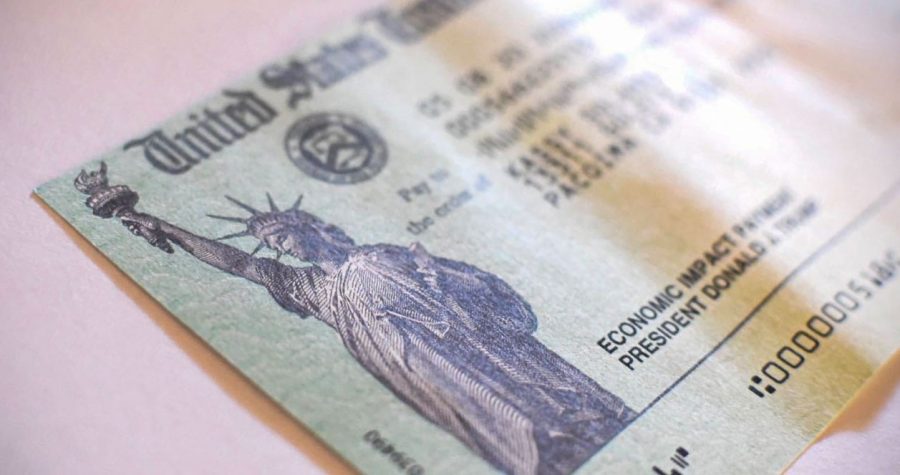What’s going on with those federal stimulus checks?
May 13, 2020
Nearly 130 million individuals and more than $200 billion in stimulus checks have been made available from the Department of the Treasury and the Internal Revenue Service for coronavirus economic relief.
U.S. residents who set up direct deposit began receiving their checks in the middle of April. Paper checks were mailed to those who have not set up a direct deposit account with the IRS.
It may take up to 20 weeks for everyone who is eligible to receive their check in the mail, according to the Associated Press, paper checks are issued at a rate of about 5 million per week, which would result in some delay.
Those who qualify for the economic impact payments include single U.S. residents who have an adjusted gross income less than $99,000, someone who files as the household and earns under $146,500, or someone who files jointly without children and earns less than $198,000, according to the IRS.
The economic relief is aimed to help low and moderate income families. Individual taxpayers with children will receive an additional $500 per child regardless of income, according to the IRS.
The amount an individual receives from their economic relief check is based on adjusted gross income from the 2019 federal tax filing, or from 2018 federal tax filing for those who haven’t filed their taxes in 2019. The IRS said an individual’s economic relief check payment will be affected if the individual has not filed their taxes for 2018.
“Even with the filing deadline extended, we urge taxpayers who are owed refunds to file as soon as possible and file electronically,” IRS Commissioner Chuck P. Rettig said in a press release March 21.
“Although we are curtailing some operations during this period, the IRS is continuing with mission-critical operations to support the nation,” Rettig said. “And that includes accepting tax returns and sending refunds.”
Treasury Secretary Steven Mnuchin said if individuals meet the requirements but haven’t set up their account, they still have time to receive their checks, but must act quickly to receive the full payment.
The IRS committee said that those who set up their direct deposit account will receive the payment much quicker. If they set up their account they can receive the check as early as the following week.
If a “Status Not Available” message appears on their account, the IRS does not have enough information to proceed with the application. See IRS statement on “Get my Payment Application” page.
In an attempt to defraud people, scammers claim to be from the IRS by using “robocall” voicemails that ask for the call receiver’s Social Security number. This is also happening through impersonation email scams. The IRS does not send unsolicited emails.
On top of scams and glitches, the agency has been aware of deceased family members receiving stimulus checks.
The IRS updated their frequently asked questions webpage to alert taxpayers that payments mistakenly sent to deceased must be returned by writing “void” in the endorsement section on the back of the check and mailed back to an IRS office.
“A payment made to someone who died before receipt of the payment should be returned to the IRS by following the instructions about repayments,” the agency said.
In an Instagram poll, students responded how they’re spending their stimulus checks.
Some students responded saying they’ll be spending their stimulus checks on rent, saving for a new car, or car payments and towards student loans.
CSUN student Liz Campos is saving towards purchasing a car with her stimulus check. Cal State Long Beach student Victor Rodriguez, is using his stimulus check to help pay for his rent.
Information regarding to filing and payment deadlines can be found here: https://www.irs.gov/coronavirus-tax-relief-and-economic-impact-payments
For more information on payment statues can be found here: https://www.irs.gov/coronavirus/get-my-payment?mod=article_inline
